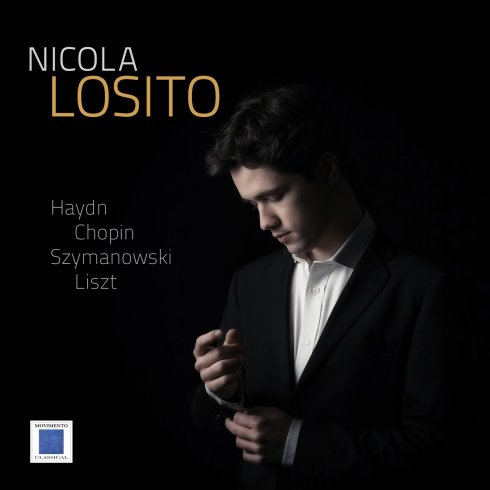

Far a long time, Haydn was associated with the aesthetics of classicism, based on rationality, balance, a sense of symmetry and proportion. Stendhal, in The Life of Havdn, wrote that "an intelligent woman said that when she heard a quartet of Haydn's, she fancied herself present at the conversation of four agreeable persons." The rather starched image passed down to us from the nineteenth century is, however, false, or at least incomplete: he was actually one of the most daring experimenters of the eight eenth century. Like Cari Philipp Emanuel Bach, Haydn completely demolished predictable academic symmetry and constructed a discourse in which unpredictability and asymmetry are crucial. In the Sonata Hob XVI: 50 in C major, published in 1800, seemingly innocent topics are developed with visionary boldness. The opening Allegro, creating a dialogue between the principle of sonata form with that of variation, adorns a theme that comes across as stark and angular. As the theme develops further, we are surprised by some audaciousmodulations. From the brilliant humour of the first movement we progress, with the Adagio, to an atmosphere of ecstatic reverie: the climate brings to mind the Andante cantabile of Mozart's Sonata K 310, but above ali serves as a prelude to the young Beethoven's great adagios. The final Allegro molto, also called "minuetto in follia", creates a new humorous turnaround: from ecstasy we revert to earthly gibes (Schumann's humour will later be indebted to this). The constant interruptions to the discourse make the pause the real protagonist of this movement, which borders on the surreal: in some passages, as also in Mo zart's Quartet K 590, the composer appeals to the listener's sensibility to mentally reconstruct, during the pause, the harmonious link that per mits a return to the main tonality. Whilst Haydn has been harmed by the label of classicist, Chopin on the other hand is far from being exclusively linked to romantic sentimen tality: his skill as a composer, as is evident from the voice leading in the Nocturne op. 62 n. 1 in B major, finds its roots in Bach and the Baroque. lt is however undeniable that the sweet, smooth melody recalls the ltalian bel canto that Chopin was able to transiate so well to the pianoforte. Emil van Gretsch said that the way he played was "entirely based on the vacai styles of Ru bini, Malibran and Grisi". Moreover Georges Mathias, a pupil of Chopin's, noted in the Noc turnes "accents of infinite pain; some bars will open up an abyss, they will plunge you into the immensity". In Op. 62 n. 1 the ornamentation is also remarkable: Chopin completely transforms Biedermeier style and manages to render a po etic meaning to each and every trill and every fioritura, without ever giving the impression of purely decorative virtuosity. Szymanowski, also Polish, shares Chopin's taste for experimenting with timbre and richness of sound. The youthful Variations Op. 3 are part of the first phase of Szymanowski's creative activ ity, chiefly influenced by Richard Strauss, Reger and Scriabin. The theme {Andantino tranquillo e semplice), almost gloomy in its solemn pace, is followed by a first variation in which the sing ing, locateci in the middle register, is counter acted by sinuous sextuplets with the right hand and grand leaps with the left. The rapid-paced second variation occurs in an atmosphere of turmoil, almost of anguish, whilst the third (An dantino quasi tempo di mazurka) recovers a rhythm of folk dance, transforming it completely by means of sophisticated harmonies; sardonie accents render the Scherzando of the fourth and the sixth variations ambiguous, whilst the fifth - fluid and sensual - evokes the languid sweetness of some Chopin and Scriabin pieces. After the virtuoso exploit of the seventh varia tion, almost a study piece, the eighth variation leads us back to leaden atmospheres {Mesto. Pesante, ben tenuto); Szymanowski's particu lar vexation dissolves in the next variation, in an elegant Tempo di Valse. After the softness of Variations X and Xl, the fire returns in Vari ation Xli, which seems to draw on Schumann's Toccata: between triumphal and hallucinatory, it closes the cycle withgrandeur. lt is, however, lberian folklore which animates the Spanish Rhapsodv by Liszt: just as in Ra chmaninov's Variations on a Theme of Core/li, the ancient Fo//ies of Spain theme is the start ing point for research on transcendental piano playing.



